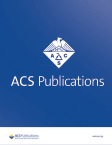摘要 PO4-02-04:PenelopeB队列中浸润性小叶乳腺癌患者的总生存率和疾病复发率
IF 3.4
Q2 PUBLIC, ENVIRONMENTAL & OCCUPATIONAL HEALTH
引用次数: 0
摘要
研究背景在PENELOPEB试验中,对于激素受体阳性(HR+)/人表皮生长因子受体2阴性(HER2-)、新辅助化疗(NACT)后复发风险高的早期乳腺癌女性患者,在标准内分泌治疗(ET)的基础上加用1年细胞周期蛋白依赖性激酶4/6(CDK4/6)抑制剂帕博西尼(palbociclib),在主要研究分析中并未改善浸润性无病生存期(iDFS)或总生存期(OS)。浸润性小叶乳腺癌(ILC)约占所有乳腺癌(BC)的15%,是一种未得到充分研究的BC亚型,通常对(新)辅助化疗的敏感性较低,无论对NACT的反应如何,远处无病生存期(DDFS)都较差。在此,我们报告了绝经前和绝经后妇女接受 PENELOPEB 和 ILC 的 iDFS、DDFS 和 OS 的事后分析结果。方法对HR+/HER2阴性BC患者进行随机分组(1:除了使用他莫昔芬 (TAM) +/- 促性腺激素释放激素类似物 (GnRHa) 或芳香化酶抑制剂 (AI) +/- GnRH 的标准 ET 外,患者还将在 28 天周期的第 1-21 天每天接受 13 个周期的 palbociclib 125 毫克或安慰剂治疗。根据手术时的结节状态、初诊年龄(< 50 岁与≥ 50 岁)、Ki-67、地区和 CPS-EG 评分进行分层随机化。ILC诊断由研究者在病理病例报告表上进行局部评估和报告。这项事后分析的主要目的是评估高风险ILC患者的iDFS、DDFS和OS。结果共有1250名患者接受了随机治疗,其中110人患有ILC,两组患者的分布几乎一致(palbociclib治疗组58人,安慰剂治疗组52人),与绝经前女性(palbociclib治疗组41.4%,安慰剂治疗组46.2%)相比,绝经后女性的比例更高(palbociclib治疗组58.6%,安慰剂治疗组53.8%)。治疗组之间使用 AI/TAM 的分布没有差异。与安慰剂相比,帕博西尼的3年iDFS绝对值估计相差18.3%(iDFS为88.4% [95% CI 76.0-94.6] vs. 70.1% [95% CI 55.3-80.7]),HR为0.66 [95% CI 0.27 - 1.61, log-rank p=0.354])。3年DDFS差异为16.3%。估计 3 年-OS 差异为 16.4%(98.0% [95% CI 86.6 - 99.7] vs. 81.6% [95% CI 67.5 - 90.0]),危险比 (HR) 为 0.27 (95% CI 0.05 - 1.43, log-rank p=0.108)。在观察到的12例死亡病例(2例palbociclib与10例安慰剂)中,11例(安慰剂组)与转移性BC有关。结论在这项事后分析中,在NACT后复发风险较高的HR+/HER2- ILC女性患者中,观察到OS有改善趋势,在ET基础上加用palbociclib的iDFS和DDFS也有改善趋势,但这些差异无统计学意义。这可能是高风险ILC患者的一种有价值的治疗选择。由于ILC亚组样本量较小,有必要进行进一步的随访评估。此外,从其他 CDK4/6 抑制剂辅助试验中对 ILC 亚组进行分析也能证实这些发现。表.PenelopeB队列中浸润性小叶乳腺癌患者的总生存率和疾病复发率 iDFS、DDFS和OS的结果。引用格式:Hervé Bonnefoi, Frederik Marmé, Miguel Martín, Michael Untch, Sung-Bae Kim, Harry Bear, Nicole McCarthy, Karen Gelmon, José Ángel García-Sáenz, Catherine M. Kelly, Toralf Reimer, Zhe Zhang, Masakazu Toi, Hope Rugo, Michael Gnant, Andreas Makris, Nader Hirmas, Valentina Nekljudova, Johannes Holtschmidt, Sibylle Loibl.PenelopeB队列中浸润性小叶乳腺癌患者的总生存率和疾病复发率[摘要]。In:2023 年圣安东尼奥乳腺癌研讨会论文集;2023 年 12 月 5-9 日;德克萨斯州圣安东尼奥。费城(宾夕法尼亚州):AACR; Cancer Res 2024;84(9 Suppl):Abstract nr PO4-02-04。本文章由计算机程序翻译,如有差异,请以英文原文为准。
Abstract PO4-02-04: Overall survival and disease recurrence rates in patients with invasive lobular breast cancer of the PenelopeB cohort
Background: In the PENELOPEB trial, the addition of 1-year of cyclin-dependent kinase 4/6 (CDK4/6) inhibitor palbociclib to standard endocrine therapy (ET) for women with hormone receptor-positive (HR+)/human epidermal growth factor receptor 2-negative (HER2-) early breast cancer at high risk of recurrence after neoadjuvant chemotherapy (NACT) did not improve invasive disease-free survival (iDFS) or overall survival (OS) in the main study analysis. Invasive lobular breast cancer (ILC) accounts for ~15% of all breast cancers (BC) and represents an underinvestigated subtype of BC with typically less sensitivity to (neo)adjuvant chemotherapy, and poor distant disease-free survival (DDFS) irrespective of response to NACT. Here, we report the post-hoc analysis results of iDFS, DDFS and OS in pre- and postmenopausal women enrolled on PENELOPEB and with ILC.
Methods: Patients with HR+/HER2-negative BC without pathological complete response (pCR) after taxane-containing NACT and at high risk of relapse (CPS-EG score ≥3, or 2 and ypN+) were randomized (1:1) to receive 13 cycles of palbociclib 125mg daily or placebo on days 1-21 of a 28-day cycle in addition to standard ET with tamoxifen (TAM) +/- gonadotropin-releasing hormone analogue (GnRHa) or aromatase inhibitor (AI) +/- GnRH. Randomization was stratified by nodal status at surgery, age at first diagnosis (< 50 vs. ≥50 years), Ki-67, region, and CPS-EG score. ILC diagnosis was locally assessed and reported by the investigators on the pathology case report form. The primary objective of this post-hoc analysis was to evaluate iDFS, DDFS and OS by treatment arm in patients with high risk ILC.
Results: A total of 1,250 patients were randomized, of whom 110 had ILC and were nearly uniformly distributed between both treatment arms (palbociclib n=58 vs. placebo n=52), with a higher proportion of postmenopausal women (58.6% in the palbociclib arm vs. 53.8% in the placebo arm) compared to premenopausal women (41.4% in the palbociclib arm vs. 46.2% in placebo arm). There was no difference in the distribution of AI/TAM use between the treatment arms.
An estimated absolute 3-year-iDFS difference of 18.3% with palbociclib compared to placebo (iDFS 88.4% [95% CI 76.0-94.6] vs. 70.1% [95% CI 55.3-80.7]) with a HR of 0.66 [95% CI 0.27 – 1.61, log-rank p=0.354]) was observed. A comparable 3-year-DDFS difference of 16.3% was observed. An estimated 3-year-OS difference of 16.4% (98.0% [95% CI 86.6 – 99.7] vs. 81.6% [95% CI 67.5 – 90.0]) with a hazard ratio (HR) of 0.27 (95% CI 0.05 – 1.43, log-rank p=0.108) was observed. Out of 12 observed deaths (n=2 palbociclib vs. n=10 placebo), 11 (in placebo arm) were related to metastasic BC.
Conclusions: In this post-hoc analysis, a trend towards improvement in OS and a trend in favor of iDFS and DDFS for the addition of palbociclib to ET was observed among women with HR+/HER2- ILC at high risk of recurrence after NACT, but these differences were not statistically significant. This could represent a valuable treatment option for patients with high risk ILC. Due to the small sample size of the ILC subgroup, further follow-up evaluation is necessary. Moreover, analyses in the ILC subgroup from other adjuvant CDK4/6 inhibitor trials could substantiate these findings.
Table. Overall survival and disease recurrence rates in patients with invasive lobular breast cancer of the PenelopeB cohort Results of iDFS, DDFS and OS.
Citation Format: Hervé Bonnefoi, Frederik Marmé, Miguel Martín, Michael Untch, Sung-Bae Kim, Harry Bear, Nicole McCarthy, Karen Gelmon, José Ángel García-Sáenz, Catherine M. Kelly, Toralf Reimer, Zhe Zhang, Masakazu Toi, Hope Rugo, Michael Gnant, Andreas Makris, Nader Hirmas, Valentina Nekljudova, Johannes Holtschmidt, Sibylle Loibl. Overall survival and disease recurrence rates in patients with invasive lobular breast cancer of the PenelopeB cohort [abstract]. In: Proceedings of the 2023 San Antonio Breast Cancer Symposium; 2023 Dec 5-9; San Antonio, TX. Philadelphia (PA): AACR; Cancer Res 2024;84(9 Suppl):Abstract nr PO4-02-04.
求助全文
通过发布文献求助,成功后即可免费获取论文全文。
去求助
来源期刊

ACS Chemical Health & Safety
PUBLIC, ENVIRONMENTAL & OCCUPATIONAL HEALTH-
CiteScore
3.10
自引率
20.00%
发文量
63
期刊介绍:
The Journal of Chemical Health and Safety focuses on news, information, and ideas relating to issues and advances in chemical health and safety. The Journal of Chemical Health and Safety covers up-to-the minute, in-depth views of safety issues ranging from OSHA and EPA regulations to the safe handling of hazardous waste, from the latest innovations in effective chemical hygiene practices to the courts'' most recent rulings on safety-related lawsuits. The Journal of Chemical Health and Safety presents real-world information that health, safety and environmental professionals and others responsible for the safety of their workplaces can put to use right away, identifying potential and developing safety concerns before they do real harm.
 求助内容:
求助内容: 应助结果提醒方式:
应助结果提醒方式:


